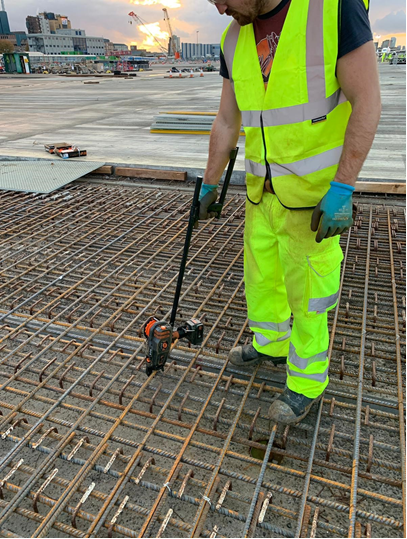Bam Nuttall have implemented rebar mechanical tying guns to increase efficiency and significantly reduce repetitive strain injuries. The tying gun provides a solution to the physically demanding, monotonous and time-consuming work of manual tying.
Tying rebar involves handling heavy materials, working in awkward positions, and repeating the same hand twisting motions over and over. All of this can lead to serious wear and tear on the body.
The National Institute for Occupational Safety and Health (NIOSH) was tasked to compare the hazards of hand tying versus using powered tying tools. (This study did not evaluate the risks in lifting and carrying rebar, which are somewhat different.)
They studied rebar tying during the construction of a freeway bridge deck. Hand/wrist movements and body positions were measured, first when using pliers to twist 16-gauge wire, and then when using a powered tying gun with 21-gauge wire. The gun was used alone, and then used again with a 3-foot extension handle.
The results showed that:
- Twisting with pliers required harmful hand and wrist motions, increasing the chance of a serious injury like carpal tunnel syndrome.
- Unsupported stooping when twisting with pliers at ground level, using both hands, increased the risk of back pain and injury.
- Power rebar tying tools reduced harmful hand and wrist movements.
- Tying rebar at ground level, using an extension handle on a powered rebar tying tool, gave the most protection against back pain and injury.
Monitor report. BAM Nuttall. London. November 2019.
Did you find this article helpful?
Please rate this article

Loading...





